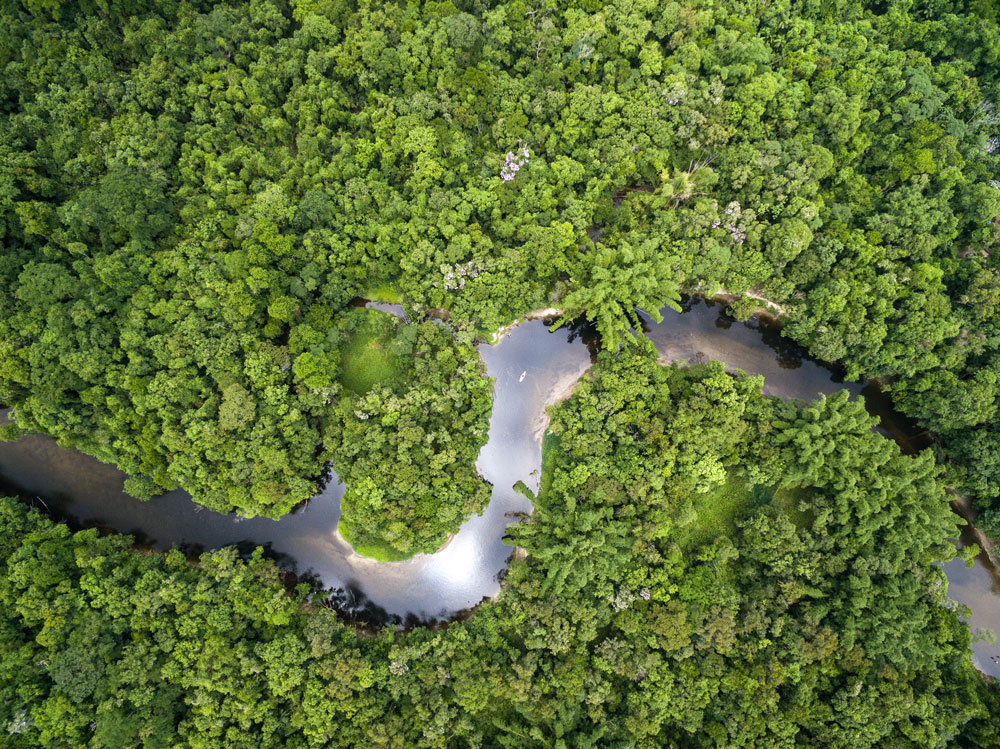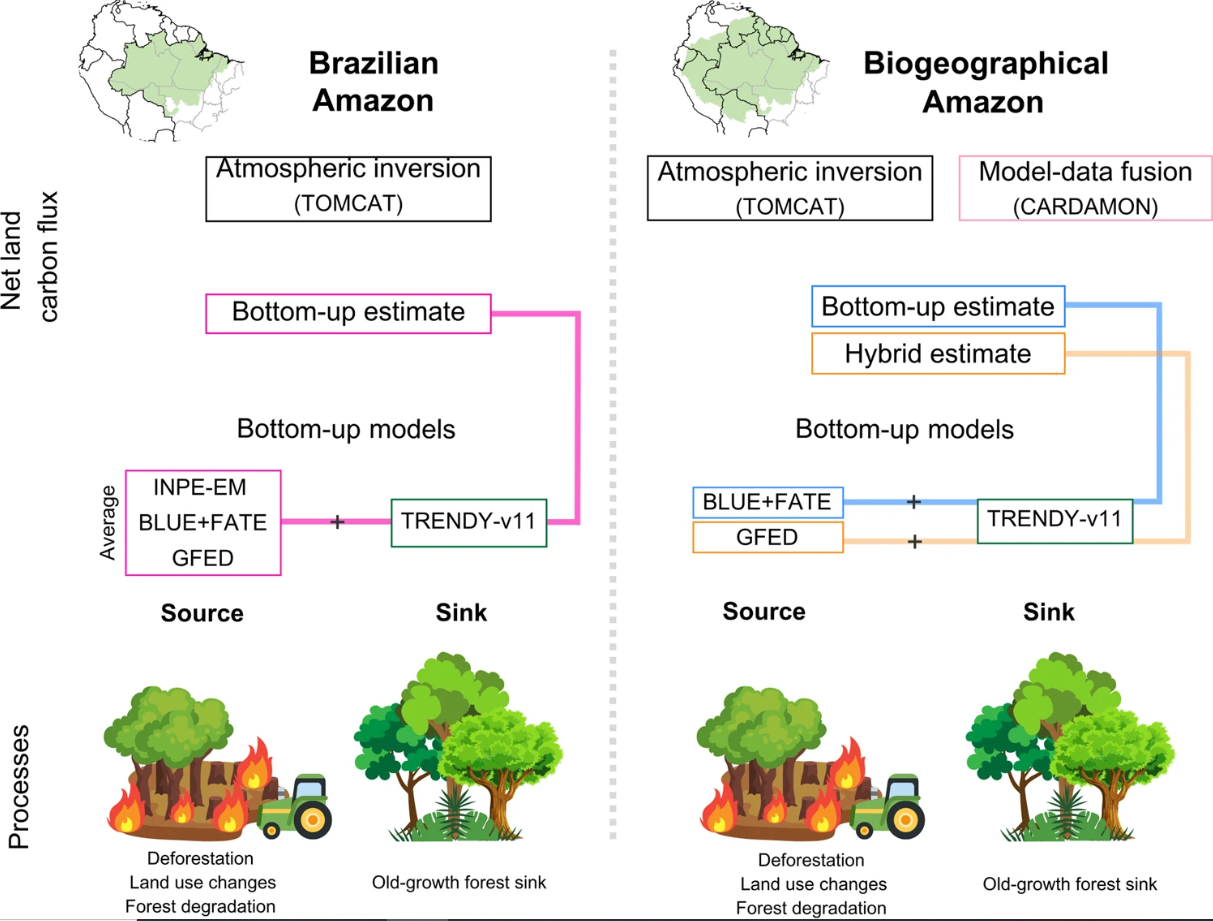
News and Media

NCEO scientists contribute to study which reveals the changing role of the Amazon rainforest in the global carbon cycle

NCEO scientists at the University of Leeds and the University of Edinburgh have contributed to a study of land carbon sinks and sources in the Amazon. The paper, which was published this week in the Nature journal, Communications Earth & Environment, addresses a key global uncertainty – whether the Amazon region is a net source or sink of carbon.
Overall, our results point to increasing human-induced disturbances (deforestation and forest degradation by fires) and reduction in the old-growth forest sink during drought.
Accurate estimation of the Amazon’s carbon exchanges is complicated by significant and wide-scale human driven disturbances (land use, land cover change and fire) and the effects of climate change. Therefore, there is a need to synthesise across multiple independent approaches to provide harmonised estimates of net carbon fluxes to identify the locations of sources and sinks, and improve our degree of confidence. In addressing this knowledge gap the paper improves our understanding of the role the Amazon plays in the carbon cycle.
Historically, Amazon old-growth forests (those not impacted by human induced disturbances) have played a key role in the carbon cycle as a reliable carbon sink. Unfortunately, through environmental changes (e.g. more extreme droughts) and human disturbances, the carbon sink of the Amazon has been in decline. The Amazon old-growth forests are at risk of losing their climate change mitigation benefits, absorbing less carbon dioxide from the atmosphere and in the future even becoming a source.
Dr Chris Wilson, NCEO at the University of Leeds has been leading the ‘top-down’ contribution to the study, using the inverse atmospheric model, INVICAT, to estimate carbon fluxes from the Amazon basin for the period 2010-2020. Using the model, the team assimilated flask measurements of atmospheric CO2 from around the globe, along with airborne measurements taken at four locations within the Amazon. The results were then combined with the estimates from the ‘bottom-up’ methods, including land surface models and the University of Edinburgh’s satellite observation informed model-data fusion analysis, to provide a comprehensive overview of carbon fluxes in the region.
Assessing the Amazon rainforest’s ability to continue absorbing carbon dioxide from the atmosphere amid the threats of deforestation and climate change has long been difficult. By bringing together some of the best data-led estimates of carbon fluxes in the region, this study advances our understanding of the Amazon’s changing carbon balance. However, key uncertainties will remain without improved satellite and in situ observation of the region.
Dr Chris Wilson, NCEO at the University of Leeds

The research team provided a comprehensive assessment of net land carbon fluxes, accounting for both the old-growth forest sink and sources from human-disturbed forest. However, they did not have sufficient data to fully reconcile the top-down and bottom-up estimates of the net carbon balance for the Amazon as a whole. Each independent approach agrees that the south-eastern part of the Amazon was a net source of carbon between 2010-2020 due to deforestation, the impacts of wildfires and climate trends and that the currently undisturbed forests showed substantial sensitivity to climatic extremes, reducing carbon uptake and potentially acting as a net source in individual years. As human disturbance and climate change continues these results indicate the long-term likelihood of the Amazon’s role in climate mitigation may be compromised.
A critical data gap to be addressed is the lack of accurate estimates of carbon stored in wood across the Amazon and how it changes over time. In combination with model-data fusion approaches, this could be instrumental in understanding the overall Amazon carbon balance. Satellite-based measurements offer a unique opportunity to acquire this information, in particular the upcoming ESA Biomass mission which is the first satellite specifically designed to accurately measure carbon stored in wood from space.
The lead authors of the paper are Dr Thais Michele Rosan and Prof Stephen Sitch from the University of Exeter. Prof Mathew Williams and Dr Luke Smallman, both NCEO at the University of Edinburgh contributed to the paper. Download Synthesis of the land carbon fluxes of the Amazon region between 2010 and 2020.
Latest News and Events





